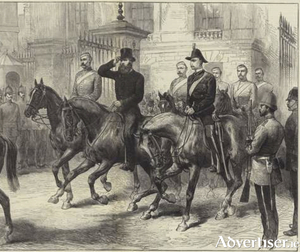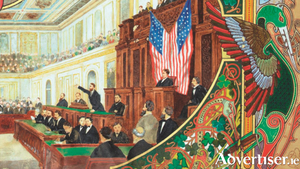Search Results for 'Charles Stewart Parnell'
17 results found.
‘A man ran shouting: Lord Cavendish and Burke are killed..’
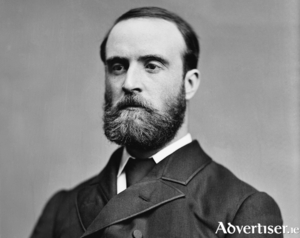
The Maamtrasna Murders happened at a time of deep unrest in Ireland. Three years previously, the most effective protest against the insidious landlord domination of the vast majority of the Irish people found expression in the Land League. It was established on October 21 1879, in the Imperial Hotel, Castlebar, by a former Fenian prisoner Michael Davitt. In a sweeping revolutionary statement, the League proclaimed the right of every tenant farmer to own the land he worked on. Because of the abuses heaped on tenants by some landlords, it had an immediate impact.
‘A pale granite dream, afloat on its own reflection’
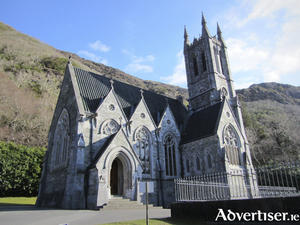
Mitchell Henry’s final days in Kylemore were sad ones. His adored wife Margaret had died at 45 years-of-age, and rested in a simple brick mausoleum in the grounds of his palatial Kylemore Castle. His political life, into which he put a great deal of personal effort, advocating on behalf of all Irish tenants the rights for them to own their own land, was out manoeuvred by Charles Stewart Parnell and the Land League. Henry described the Land League methods as ‘dishonest, demoralising and unchristian’. He probably was not surprised to lose his Galway seat in the general election of 1885. He blamed ‘Parnalite intimidation’.
A different type of politics was needed
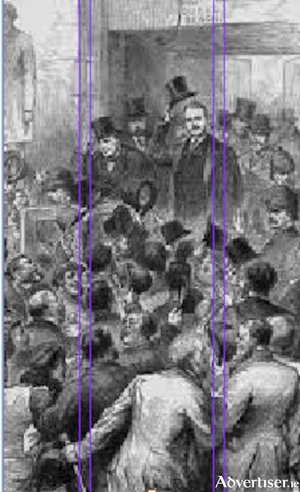
When Mitchell Henry entered Westminster parliament in 1871 he went with hope in his heart and a mission to tell the British people the precarious circumstances of the Irish tenant farmer. In many ways he resembled Jefferson Smith in the Frank Cappa film ‘Mr Smith Goes to Washington’ where a naive, idealistic young man has plans to change America.* Mitchell Henry, a liberal, kindly man, had plans to be a voice for the Irish tenant farmer within, what he believed, was a paternalistic landlord system, but he walked into a political cauldron, waiting to explode.
The Railway Hotel
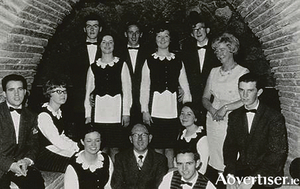
This ancient site on the southern end of what we now know as Eyre Square was occupied by a Knights Templars convent in the 13th century. By the 17th century Robert Martin had a large house on the site, but this was taken from him by the Cromwellians and given to Edward Eyre. The Eyre family held on to the property and on May 12, 1712, Edward Eyre, son of the above, presented the land in front of his house to the corporation as a place of recreation for the people of Galway. In 1827, a man named Atkinson built houses at this end of the Square and by 1845, the site was occupied by a block of tenements owned by Fr Peter Daly.
Mr Tuke’s Fund

One of the reasons for the success of Mr Tuke’s Fund, which sponsored emigrants to America and Canada in the 1880s, was that as far as possible Tuke personally interviewed those wishing to go. He insisted that only families with at least one member capable of hard, physical work could participate. Proper clothes and money were provided to start their new life, and arrangements made in advance where they would stay and find work.
John Hume – the man who laid the foundations for a new Ireland
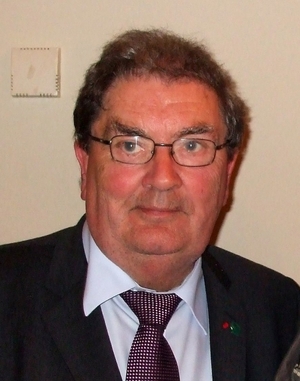
One of the many admirable qualities of the late and unquestionably great John Hume was his ability to listen. As someone once said, courage is what it takes to stand up and speak; courage is also what it takes to sit down and listen. And John Hume possessed both.
John Hume – the man who laid the foundations for a new Ireland
One of the many admirable qualities of the late and unquestionably great John Hume was his ability to listen. As someone once said, courage is what it takes to stand up and speak; courage is also what it takes to sit down and listen. And John Hume possessed both.

